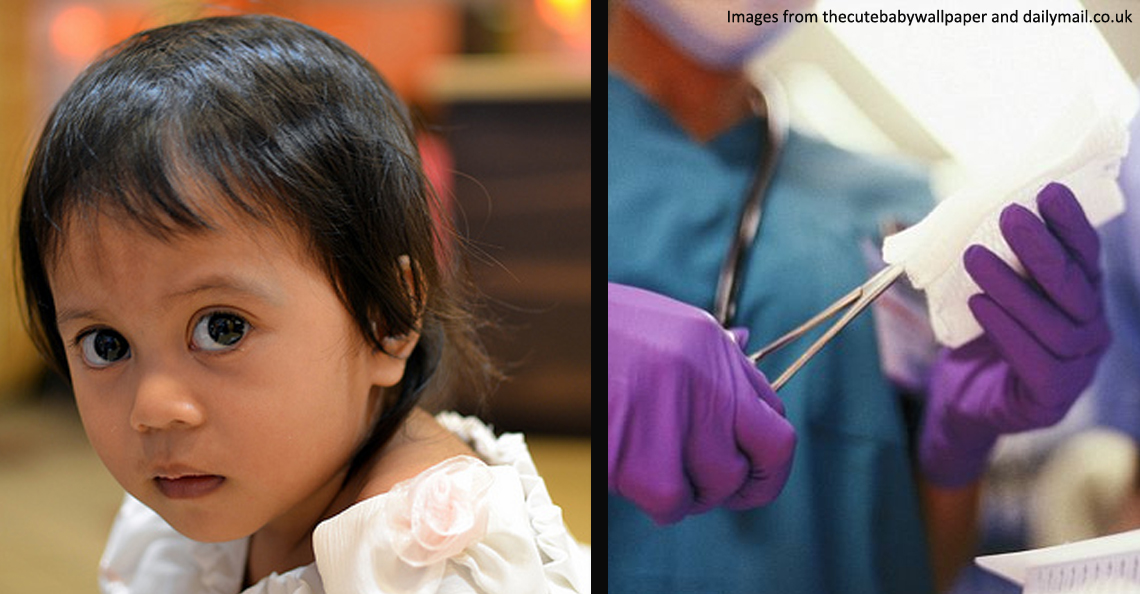Many M’sian Muslim girls are circumcised, but not in public hospitals. Here’s why.
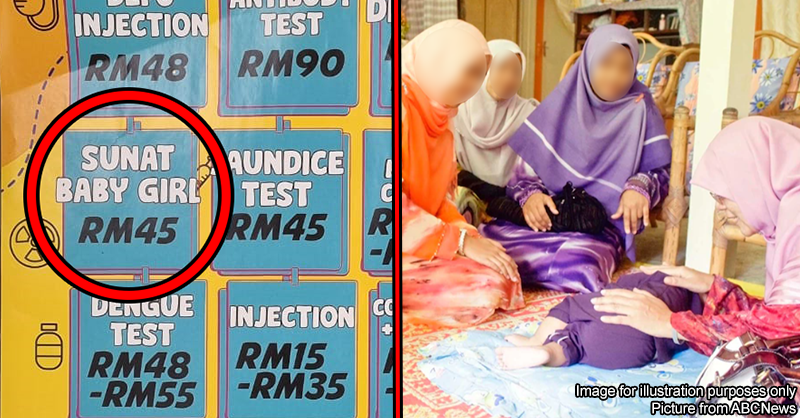
- 518Shares
- Facebook422
- Twitter10
- LinkedIn6
- Email5
- WhatsApp24
So just the other day, one of the writers went for a checkup at a clinic near their place, when they saw something in a poster that really caught their attention…

Initially, we were pretty confused. Growing up in public schools, most of us had only heard about ‘sunat’ (a.k.a. circumcision) being done on boys, ’cause from what we knew about it, how could girls be circumcised if there isn’t even anything there to uh… snip snip?
But after talking to a few of our friends over at SOSCILI, we learned that female circumcision isn’t just common, it’s basically normalized here in Malaysia. In fact, it’s probably as widely practiced as the more commonly known ‘sunat’ for boys. However, when we took to the Internet to find out more about the practice, we were greeted by BIG BOLD WARNING SIGNS about the dangers of female circumcision- because the way we circumcise girls is apparently much different from how we circumcise boys.
And so, we got in touch with a few parties with varying different opinions on the subject; Sisters in Islam (SIS), Jabatan MUFTI Wilayah Persekutuan, and a lady who experienced the brunt of the practice herself, to learn just how different female circumcision was from male circumcision… and wow, were we surprised.
We found someone whose privates were completely changed because of it.
We managed to speak to Sara* (not her real name), who was circumcised when she was just an infant. She told us about her experiences growing up and living as a woman who not only experienced being circumcised, but had the anatomy of her genitalia significantly changed when her clitoral hood, left labia minora, and most of her clitoris were completely removed.
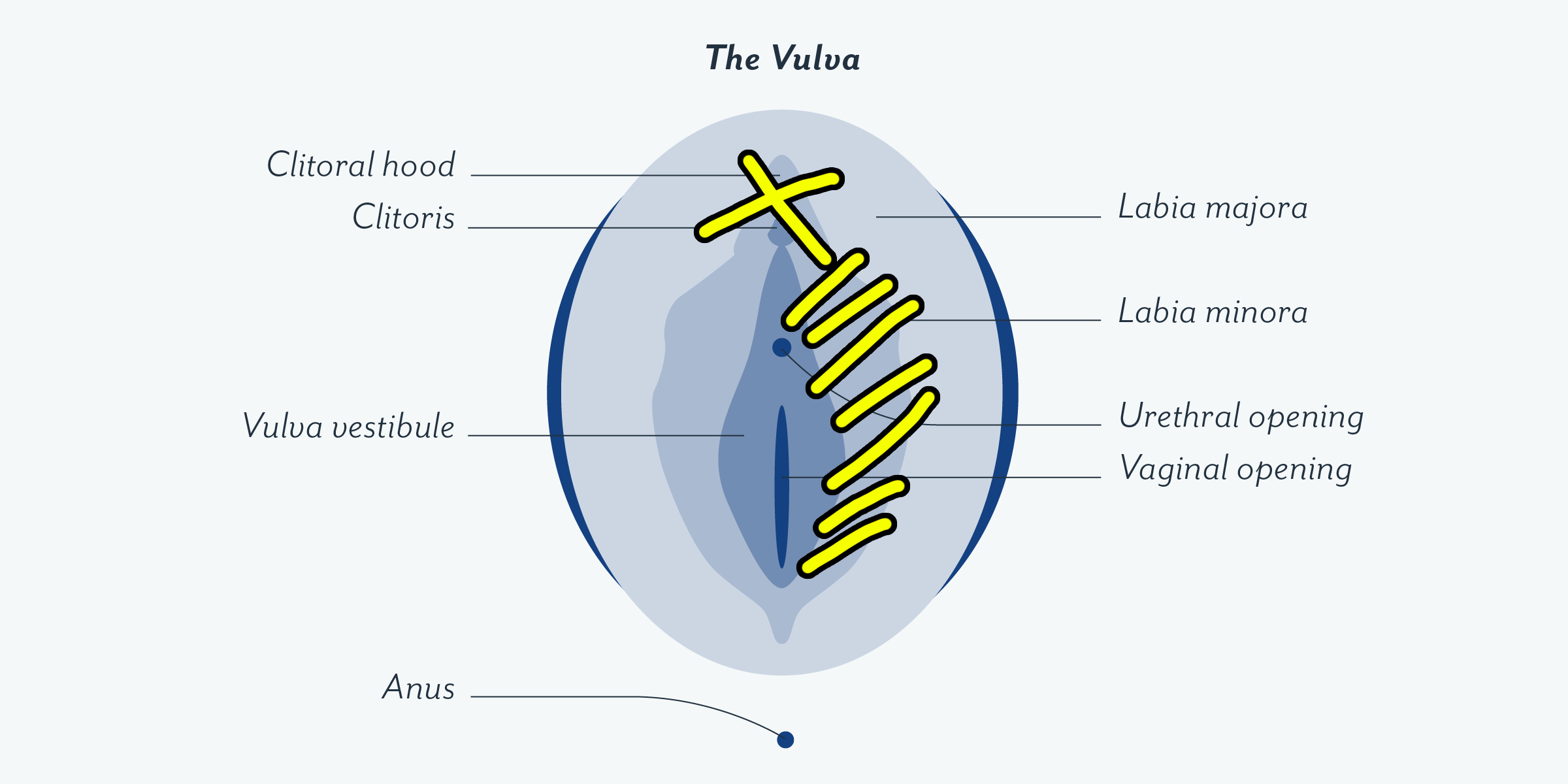
Sara told us that she only actually noticed the difference when she started reaching puberty; her labia was only growing on one side, and her privates looked “kinda wonky” (her own words, not ours, k?) This was when she realized that something was wrong, so she did her research and found out that she didn’t have a clitoris. Sara recalled feeling uncomfortable and insecure, as she no longer felt like she belonged to herself.
“I feel like my ability to feel sexual pleasure has been taken away. I tried a lot though, nothing. In a way, I feel like my body’s been reduced to giving someone else pleasure, but never feeling it myself. Kinda gross and sad when you think about it.” – Sara, to CILISOS.
However, Sara’s situation isn’t exactly common here in Malaysia, as our country generally practices a less severe approach to female circumcision. This is because unlike male circumcision where they surgically remove the foreskin of the penis, the process of circumcising females isn’t as clear-cut.
There are 4 types of female circumcision, and M’sia practices 2 of them.
Here in Malaysia, where it’s a normal and common practice, the procedure is known as ‘female circumcision, or female genital cutting (FGC)’, which is the nicer way of putting it. But when searching it up on the internet, especially in places and websites that don’t agree with it, it’s often referred to as ‘female genital mutilation‘ (FGM)… which could sound very unsettling.
As we mentioned earlier, female circumcision isn’t the same as male circumcision, where there is only one way to go about it. In fact, there are actually 4 types of female circumcision/female genital mutilation:
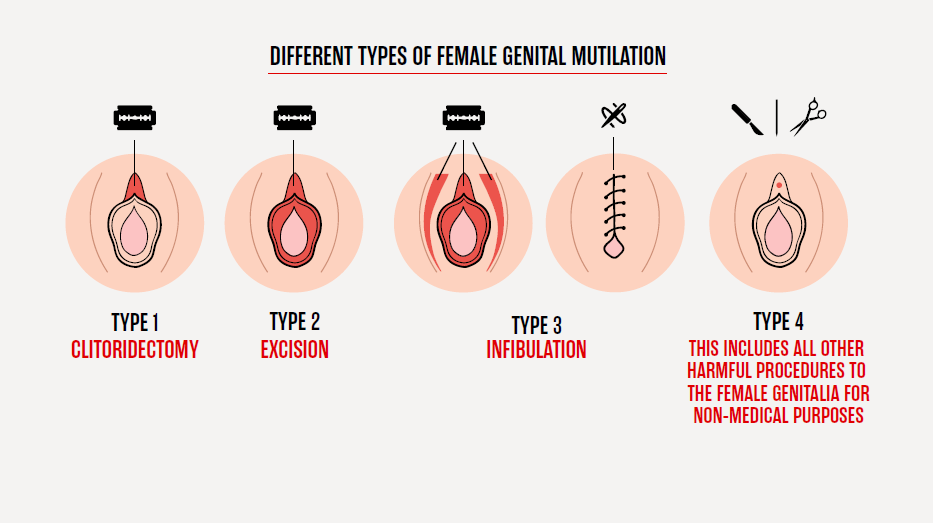
- Type 1: The clitoral hood (prepuce), and in some cases the clitoral glans (external part of the clitoris), is partially or totally removed.
- Type 2: The clitoral glans and the labia minora (the inner skin folds of the vulva) are partially or totally removed.
- Type 3: The labia majora (outer skin of the vulva) or labia minora are stitched together to narrow down the vaginal opening. The clitoris and clitoral hood may or may not be removed.
- Type 4: This type generally includes any procedures to the genital area, such as pricking, piercing, incising, scraping and even cauterizing/burning.
Malaysia mostly only practices Type 1 and Type 4 female circumcision (a.k.a. khitan wanita), which can be considered minor in comparison to Types 2 and 3, which are mostly practiced in countries like Sudan, Egypt, and countries in West Africa. The type of FGM that was experienced by Sara was Type 2, as it involved the removal of certain parts of her anatomy, including her clitoris.
Thus, those in support of the practice have said that the kind of female circumcision that’s being employed in Malaysia is not the same as FGM.
“According to the perspective of the fuqahā, female circumcision vastly differs from Female Genital Mutilation (FGM). The procedure of circumcising in Malaysia only involves the removal of the prepuce, meanwhile FGM removes and changes the anatomy [of the female genitalia]. Therefore, it should not be equated to the FGM practices.” – Jabatan MUFTI Wilayah Persekutuan (translated), to CILISOS.
However, this claim has also been refuted by many human rights groups and NGO’s in Malaysia, like Sisters in Islam (SIS) who have long advocated against the practice in Malaysia. They believe that despite the difference in terminologies, female circumcision is still under the FG-uMbrella since the nature of it still involves some form of “harm” being done to the genitalia.
“Terminology wise, they aren’t exactly considered FGM, though it does still fall under the umbrella. This is because there is still something that is being done to ” – SIS Senior Programme Officer, to CILISOS.
But even though the practice that’s mainly being employed in Malaysia might be on the lighter and less-extreme end, that doesn’t necessarily mean that the other, more severe types of FGM are non-existent in Malaysia, as seen in Sara’s case.
Additionally, she told us that her family had made this decision for her because they felt that it was “sunnah“, which in simpler terms means that it’s customary in Islam… which then brings up the question: Is it actually a religious requirement?
Female circumcision might be ‘wajib’, but only if it’s the minor kind.
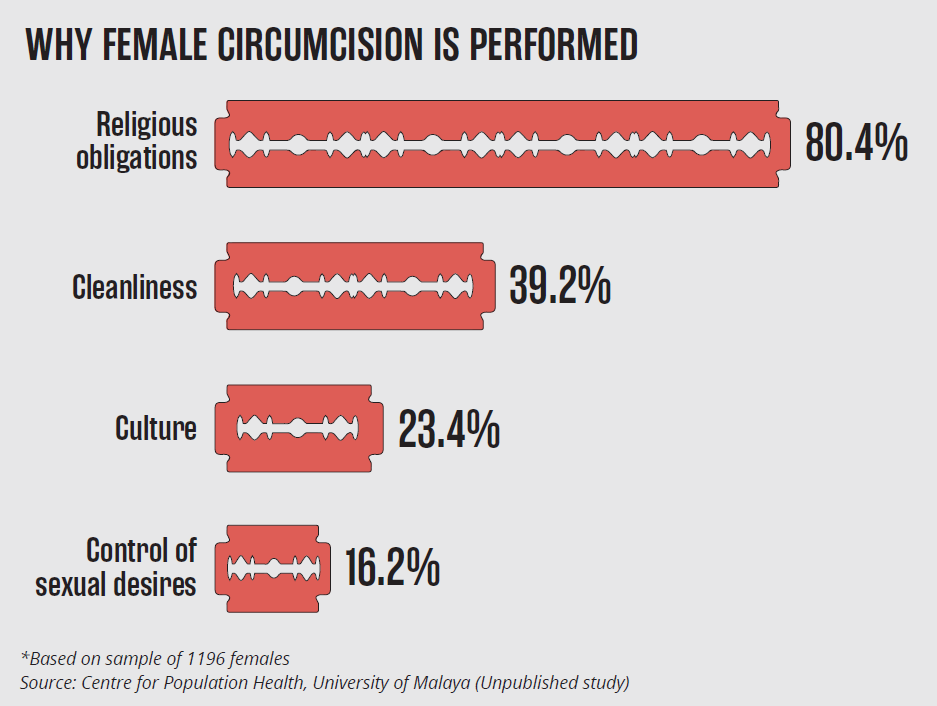
Now, when we talk about circumcision in Malaysia, whether male or female, it’s generally known as something that needs to be performed on people who are Muslim since the fatwas (Islamic rulings) mostly deemed it necessary.
Though, the topic has been under discussion for some time now, and we heard speculation about the fatwas being revised in the future; so, we got in touch with the MUFTI in Wilayah, who are involved in reviewing and issuing the fatwas according to state- and to our surprise, they replied! The Jabatan MUFTI affirmed that female circumcision would remain WAJIB, which means that it would remain a requirement and punishable by sin if ignored.
“Thus far, the position of Pejabat MUFTI remains to make female circumcision compulsory, based on the views of Mazhab Syafie, as well as the decision of the MKI (Muzakarah Fatwa Kebangsaan).” – Jabatan MUFTI Wilayah Persekutuan (translated), to CILISOS.
But despite the MKI and MUFTI’s stance on the topic, there’s no denying that there’s still been much discourse on the religious aspect of things. Some parties have said that there are hadiths that speak of female circumcision, while there are others who believe that the scriptures are not substantial or even authentic enough, stating that FGM actually predates Islam and may not even be an Islamic practice.
“It is more tradition and culture than anything. The practice of FGM has existed long before Islam was even introduced.” – SIS Senior Programme Officer, to CILISOS.
But in the midst of the discourse, it seems like there is one thing that both sides of the argument seem to mostly agree on… that there should be not be any form of harm caused to the clitoris, with both parties citing the same Hadith as a reference point:
“This is based on the hadith from Umm Atiyyah al-Ansariyyah during the implementation of circumcision that took place among women in Medina, when the Prophet Nabi Muhammad SAW instructed her:
لَا تَنْهِكِي فَإِنَّ ذَلِكَ أَحْظَى لِلْمَرْأَةِ، وَأَحَبُّ إِلَى الْبَعْلِ
Meaning: Do not be excessive (not removing the entirety of the clitoris) for it shall bring more enjoyment for the woman and be more pleasing to the husband.” – Jabatan MUFTI Wilayah Persekutuan (translated), to CILISOS.
Interestingly, Jabatan MUFTI Wilayah also highlighted in one of their interview points that female circumcision should only involve minor procedures because anything more might cause difficulties during sexual intercourse as well as bacterial infections, a concern that was also highlighted by SIS:
“Even though there have been no reported cases of warding for the practice in Malaysia, that doesn’t necessarily mean that it’s impossible- should we wait until there actually is a case before we do something about it?” – SIS Senior Programme Officer, to CILISOS.
But even though there are risks involved in the practice, it might not stem from the act of circumcision itself because…
Many female circumcisions are DIY-ed.
Unlike male circumcision which is commonly performed in proper Islamic clinics and at ‘Sunat’ gatherings, female circumcision has not been recognized as an actual medical procedure. Therefore, it cannot be performed in public hospitals and there are no proper guidelines in place as the practice is not being taught in medical school– despite it being legal, and even emphasized as a requirement.
Consequently, if a parent wanted to circumcise their child, they might have to resort to a few options; they could either seek help from the few private clinics/medical practitioners who’ve opened their doors to the practice (or at least what they think might be a clinic) where the doctor might end up having to ‘agak-agak’ the entire procedure since they aren’t taught how to do it in med school, or they could opt to do it themselves… traditional style, which was where Sara got circumcised as an infant.
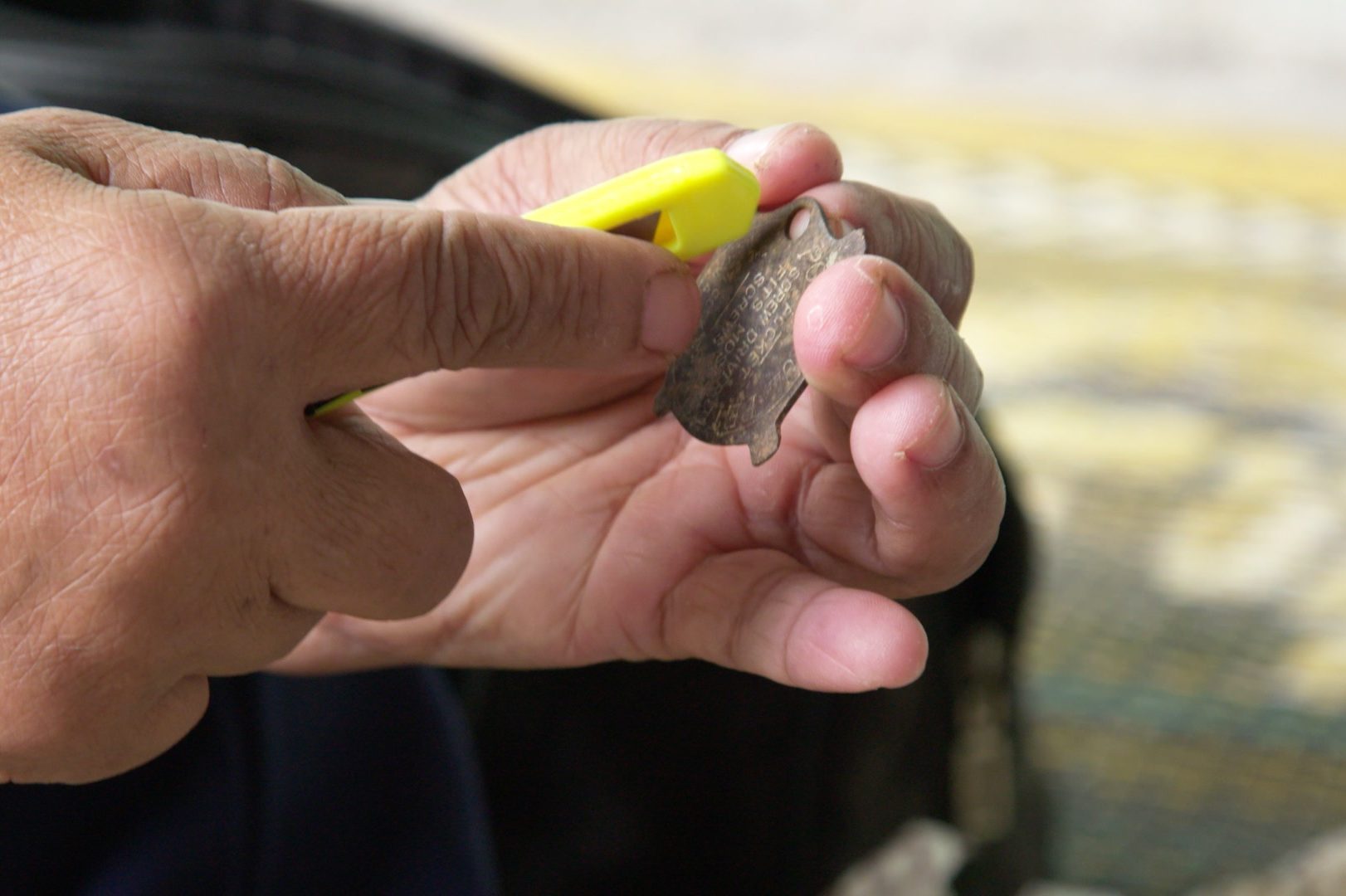
“A Mak Bidan came over to my family’s traditional kampung house and performed the circumcision using traditional tools. I don’t really remember how it felt since it happened when I was a baby, but fortunately it didn’t get infected.” – Sara, to CILISOS.
But if you’re looking at DIY-ing female circumcision, let’s just say there’s a loooongggg list of potential medical complications, most of which can primarily be caused by a lack of proper sanitized tools (bacterial infection 101) and slipped hands, that could cause accidental injury to the clitoris.
“In our study, 74% of legitimate medical practitioners that have practiced this type of circumcision (Type 1) admitted that they should have been more careful [in not accidentally injuring the clitoris].” – Dr. Dayang Anita Abdul Aziz, Director of Pusat Kepimpinan Wanita Tun Fatimah Hashim at UKM, in a video.
Additionally, there are no proven health benefits to female circumcision thus far– not anything that can be proved scientifically, at least. And contrary to popular belief, Sara told us that like any other person out there, she does have sexual urges and desires… it’s just that she won’t be able to get sexual satisfaction, as she doesn’t have the parts needed to experience pleasure.
Female circumcision might never be truly banned in Malaysia.
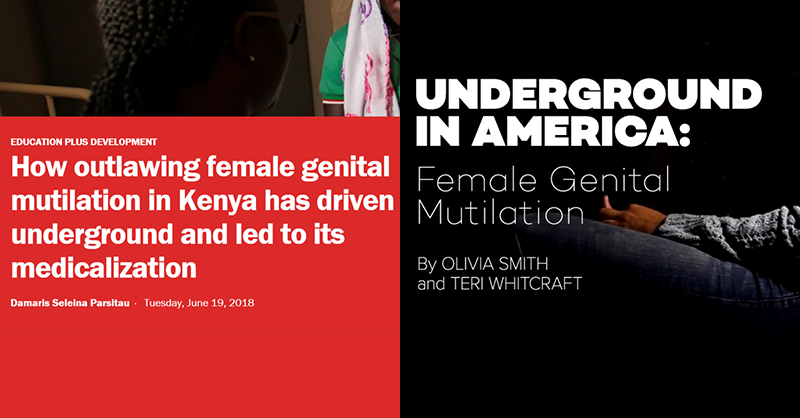
Female Circumcision has been practiced in Malaysia for a very long time. There isn’t any data to show when Malaysia started employing the practice, it’s been practiced for generations to the point where it’s become a tradition, or at the very least, seen as a part of our culture.
Therefore, many are worried that banning the practice might make it go underground, like how it was in Kenya and in the U.S. which ends up making the practice more risky and prone to complications which should be the least of our worries in this age of modern medicine. So instead, people have been looking to medicalize it and regulate it to ensure that if it is practiced, that the risks are minimalized.
Ultimately, the decision to circumcise one’s children depends solely on the parent(s). And with younger parents finding themselves making the same decision in order to fulfill their obligation to their families, the practice stands to continue. Even Sara told us that she might end up having to circumcise her children in the future due to the expectations and pressure from her family.
“It’s a tradition that’s so engrained in our culture, and I don’t think I can ever escape it. I guess I would have to do it when I have kids, but very reluctantly, and ONLY if it’s the minor type that doesn’t involve any cutting. I don’t want to mutilate my kids against their will. It’s really not my choice to make.” – Sara, to CILISOS.
In the end, for parents who do choose to continue with the practice, the risks do need to be acknowledged, and due-diligence done. ‘Cause anything less than that… just won’t cut it.
- 518Shares
- Facebook422
- Twitter10
- LinkedIn6
- Email5
- WhatsApp24

